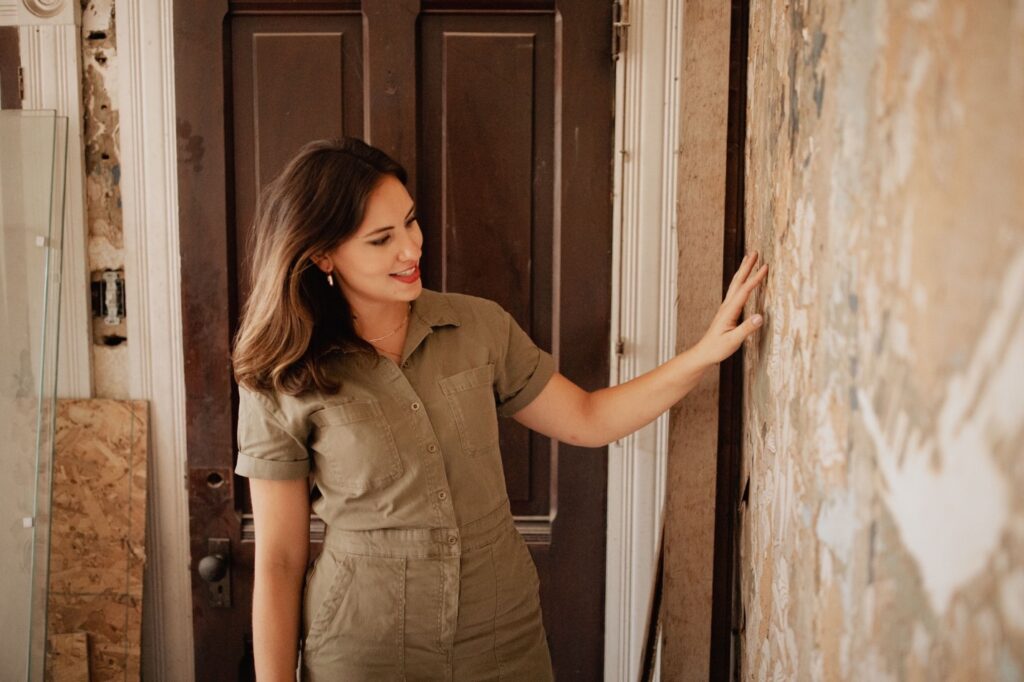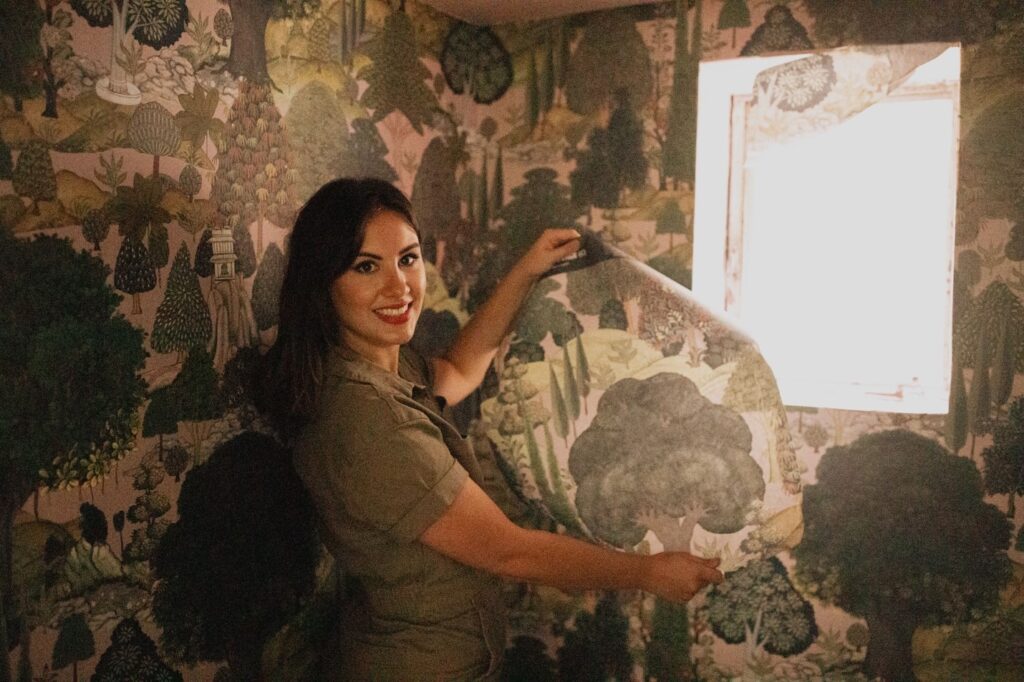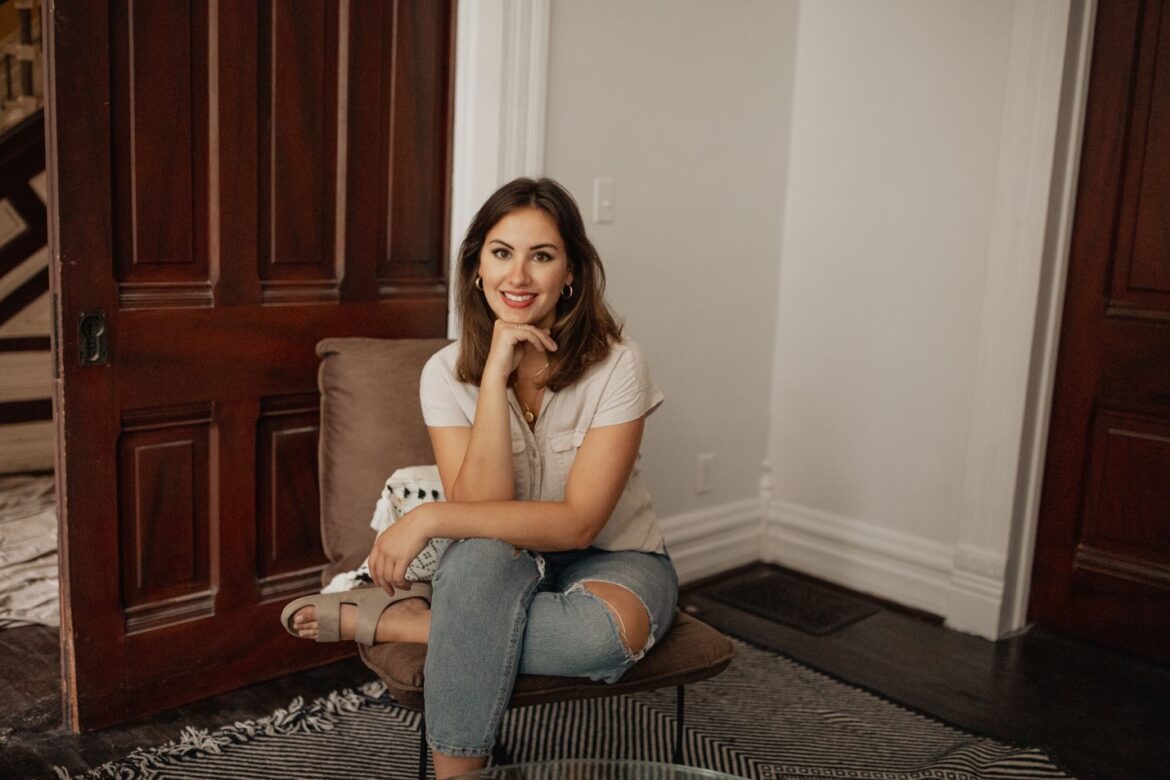With a great passion for cultural heritage, Betsy Sweeny is an architectural historian who started her career in the museum space. After gaining experience and expanding her knowledge, she merged her learnings with her love for historic buildings. Betsy dedicates her time nowadays to driving attention to old buildings in her town of Wheeling, West Virginia. She’s eager to continue sharing her love for historic buildings and community development for a long time!
- What short-term or long-term role do you want to play in the growing movement to restore old houses? Short term, I want to drive new people to old buildings in Wheeling, West Virginia. I am so proud of my town and think it is one of America’s most underrated small cities. I hope to play a significant role in helping my town and others figure out how to reuse their historic buildings and encourage regular people to take chances on old houses in the long term.
- How does your training as an anthropologist, art historian, and preservationist influence the way you see each house? I view every building through the lens of my work, and I feel it provides me with a richer frame of reference to understand the buildings I see. That being said, I do not think you have to be an architectural historian to appreciate an old building. I believe the magic of historic architecture is how it makes people feel, and that is universal.
- Did you always know that you wanted to work with historical homes? YES. From the time I was a little girl, I was obsessed with going upstairs to museums or in rooms that weren’t open to the public. My grandmother was a history enthusiast, and we used to play “olden days” in her den. Between that and a deep love of Gilmore Girls as a preteen made me believe I was destined to do this kind of work
- How has your experience working in a museum setting influenced your current work? Working in a museum has provided me with a breadth of knowledge that most people do not have the privilege of access to. Through working with so many highly educated professionals in very specialized fields, I’ve learned so much. Not everyone can just text a textile historian when they have a question, but I have a whole roster of colleagues to chat with.
- What advice would you give to potential new homeowners who want high-quality yet budget-friendly products and services? I would say start with materials, not design. A high-quality material- be it wood or stone, or tile, will always feel more substantial than something synthetic, which will translate to better design. So, worry less about trends, and focus on the best whole materials you can afford.

- How have you infused your own historic house with modern elements, and has it been hard to strike that balance? I absolutely have. My personal design philosophy is this: I never want to detract from the lifelong historical elements of my home. The floors, the woodwork, the windows, all those architectural details are meant to last a lifetime. But the ephemeral things, like furnishings, art, décor- those things are always meant to change over time, and so I have no qualms infusing my personal tastes- which are ultra-modern, into the space. I think it creates a fun juxtaposition that ends up looking quite chic.
- What criteria do you have when choosing furniture, appliances, and materials for home restorations? Material is my number one consideration. I try to avoid synthetic materials as much as possible- whether choosing a wood toilet seat over a plastic one or an Organic Cotton mattress over foam. I want to recognize the materials that make up the objects in my house. I want to purchase for quality, not convenience.
- How has the community come together to support the renovation of the McLain house? One of Wheeling’s greatest strengths is the community. I’ve had neighbors come over with plants to help landscape, extra bricks for a patio, friends have helped me paint, pull weeds, you name it. We have many great historic homeowners in this community who understand how hard it can be and are willing and ready to pass on the same kindness that was afforded to them.
- Why do you think it is important for people to learn about their area’s heritage? Learning about the past makes the present so much richer. My favorite thing about my job is helping property owners understand the history of their individual building. Whether that’s the nails that were manufactured a few blocks away or the pressed metal ceiling that was made and only distributed in Wheeling, it’s incredible to think about how many individuals with their own stories, personalities, and lives, have touched any one historic building.
- What resources are available to people who wish to learn more about the history of their own home? I encourage anyone interested in learning more about these kinds of projects to reach out to me on my website! I love to consult and help people save these old buildings.
- In your opinion, what steps do housing authorities and landlords need to take to help provide for equitable community development? This is a question with a different answer for every community. Still, overall, I think it’s incredibly important for people in power to understand the historical barriers to housing that have been in their area and work to make sure those issues are taken into consideration and continue to be addressed. Thinking in the present, I would also emphasize the need to develop a complete understanding of the community’s housing needs are, not what they are perceived to be. Take the time to get the data.

- Is there funding available for people who already live in old homes and cannot afford to restore them? Yes, the single most influential incentive out there is the historic tax credit. Federally, there is a 20% credit available for commercial structures, and many states have additional historic tax credit programs for commercial and residential properties. In West Virginia, that’s a 25% credit for commercial structures and 20% for private residences. Beyond that, many state and local governments maintain their own grants and incentives. That information can always be found at your state’s historic preservation office.
- What environmental considerations do you take into account when planning renovations? I always want to make sure that I am making the most responsible selections I possibly can. New construction is one of the biggest creators of waste and pollution, so making sure that when I need to replace or repair things, I am doing it as sustainably as possible.
- What has been the sweetest memory of restoring the McLain house? One of the best memories would have to be early on in the process when we were just starting to repair the brickwork. I spent about a month up in a man lift, fixing the house brick by brick. At one point, the entire corner had to be disassembled and re-laid- way more than I initially anticipated doing myself. But I did it, and I was proud to know that I fixed that part of the house. It felt like I was healing her.
- Are there any architects or designers who inspire you? Oh, so many. Historically, I love William Morris, but at the same time, I love post-modernism and the works of Peter Shire. I love good design no matter what era.
- What do you see as the pros and cons of moving out of a large city to live in a smaller town? Overall, I think the pros far outweigh the cons. The ability to live locally and sustainably is incredible. I love that I can direct every dollar I spend to an independent or small business on any given day. Most of the time, even someone I know! The biggest challenge can be culture. With isolation comes a lack of privilege and exposure to diverse people and cultures. That can be a hard adjustment, and it’s essential to look at the people as individuals and not get too wrapped up in how the media portrays small towns and rural communities.
- Does living in a historical Victorian house give you any different perspectives about life in general? I think living in any historic home, regardless of style, changes your perspective a bit, especially around the disposable nature of things. The features in my home were built to last forever, not 10-15 years, which is the average lifespan of a modern remodel. That attitude carries over into my view of consumerism in general. I try to buy things that I love and will be able to treasure for a lifetime, not disposable or trendy products.
- You wear many hats as the Director of Heritage programming at the Wheeling National Heritage Area, an independent home consultant, and a social media influencer. Tell us about your plans moving forward. Every day is a surprise. I call myself an accidental influencer who has been saying these things for years; It’s just all of a sudden, I have an audience. I hope to continue to share my love of historic buildings and community development as much as I can for as long as possible. I recently launched my new website, which streamlines my work locally, remotely, and personally. I’d love to expand my services and help more communities tackle historic preservation, and at home, I plan to move into the Mclain House by the end of the year and potentially invest in a new property in 2022. The more opportunities I have to showcase Wheeling, the more people will want to move here and tackle their own historic preservation project.
 Food
Food Farmers
Farmers Sustainable Living
Sustainable Living Living Planet
Living Planet News
News